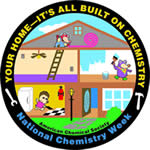Online Resources
This is a collection of online resources (websites, software, etc.). A separate collection of Print Resources is also available.
Key: E = Elementary (K–5), I = Intermediate (6–8), HS = High School (9–12), C = College, G = General Public
- Materials used to build structures
- Materials in homes
- Recycling and conservation
- Home safety
- Home preparedness
- Design practices
Materials used to build structures
- Ask the Builder. Provided by: Tim Carter, a nationally syndicated newspaper columnist. (G)
- Contains a broad array of information about home building and remodeling.
- Building Big. Provided by: PBS Online. (I, HS)
- Explore large structures and what it takes to build them. See “The Labs” to test materials that engineers use to build big.
- Building Materials. Provided by: Wikipedia Encyclopedia. (G)
- Just about every type of available material has been used for creating various human and animal homes, structures, and technologies.
Materials in homes
- How Everyday Things are Made. Provided by: Stanford School of Engineering. (G)
- This site has virtual company tours and streaming videos. In Processes, see “Painting/Coating.” In Online Tours, see “Homes.”
- How Stuff Works — Home Stuff. Provided by: HowStuffWorks. (G)
- This site is a leading source of credible, unbiased, and easy-to-understand explanations of how the world actually works.
- Strange Matter Exhibit. Provided by: Ontario Science Centre. (I, HS, G)
- This cool web site has materials science information that includes the games Materials Smackdown and The Transformer.
Recycling and conservation
- Alliance to Save Energy Kids Page. Provided by: The Alliance to Save Energy. (E, I, HS, C, G)
- Help your parents reduce home energy use and therefore reduce their energy bills. Check out stories written for kids by kids.
- Earth 911: Recycling Centers, Water Pollution, and Conservation. Provided by: Earth 911. (G)
- Enter a ZIP code to get information about recycling centers, green shopping, energy conservation, household hazardous waste, and composting.
- Energy Efficient Rehab Advisor. Provided by: U.S. Housing and Urban Development. (G)
- This web-based tool helps improve energy efficiency in existing homes during renovation and remodeling.
- Follow That House (PDF). Provided by: U.S. Environmental Protection Agency. (E)
- Kids are detectives discovering what parts of their houses are made of and how to conserve energy.
- Grassroots Recycling Network. Provided by: Grassroots Recycling Network. (G)
- Their mission is to eliminate the waste of natural and human resources — to achieve Zero Waste. Reduce, reuse, recycle! Check out KIDS RECYCLE!
- Home Energy Saver. Provided by: Lawrence Berkeley National Laboratory. (G)
- This web site is the first web-based do-it-yourself energy audit tool.
Home safety
- Code Red Rover Home Page. Provided by: Home Safety Council. (E)
- This web site for kids, parents, and teachers reinforces the home safety messages that many of you already know, as well as teach you new ones.
- Household Products Database. Provided by: National Library of Medicine. (G)
- Learn more about products used in your house, about potential health effects, and about safety and handling.
- Kids Health — Household Safety Checklists. Provided by: Nemours Foundation. (G)
- An accident or injury can occur in any part of your home. Use these checklists to make a safety check of your home.
- Learn About Chemicals Around Your House. Provided by: U.S. Environmental Protection Agency. (E, I)
- Check out this site for a house tour and learn more about the chemicals around your home.
- National Ag Safety Database. Provided by: Centers for Disease Control. (G)
- This site contains practical information for dealing with a variety of safety issues.
Home preparedness
- Emergency Preparedness and Response: Natural Disasters & Severe Weather. Provided by: U.S. Centers for Disease Control and Prevention. (G)
- Learn how to be prepared for and respond to natural disasters and severe weather. Available in 7 languages.
- FEMA for Kids. Provided by: Federal Emergency Management Agency. (E, I)
- Learn how to be prepared for disasters and prevent disaster damage. Also learn what causes disasters, play games, and read stories.
- Get Prepared: Preparedness an Everyday Task for Everyday Life. Provided by: American Red Cross. (G)
- Being prepared for emergencies is crucial at home, school, work and in your community. Also in Spanish.
- Relief Web. Provided by: United Nations. (G)
- ReliefWeb is the global hub for time-critical humanitarian information on Complex Emergencies and Natural Disasters.
Design practices
- Builderspace.com: Building Industry Directory and Information Resource. Provided by: BuilderSpace. (G)
- Check out resources section which includes links to associations and research portals.
- National Building Museum. (G)
- Toolbase Services: Home Building Industry’s Technical Info Resource. Provided by: ToolBase Services. (G)
- This site is a technical information resource on building products, materials, new technologies, business management, and housing systems.
Copyright © 2006 American Chemical Society


